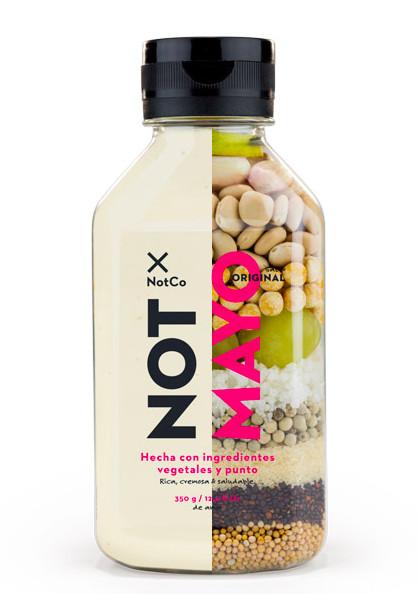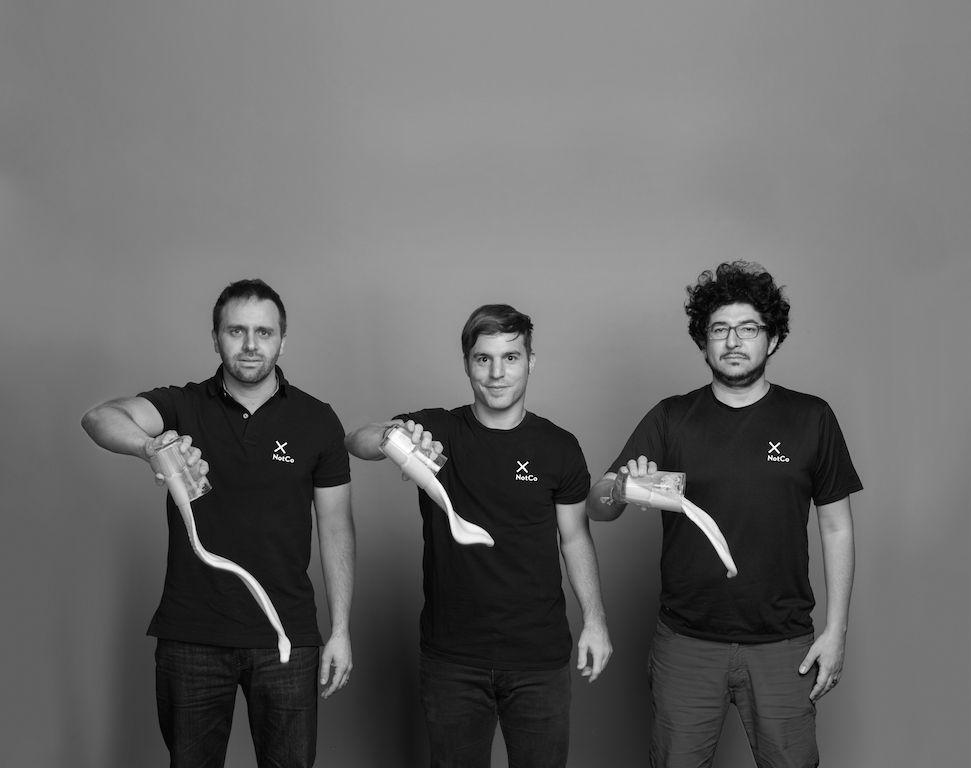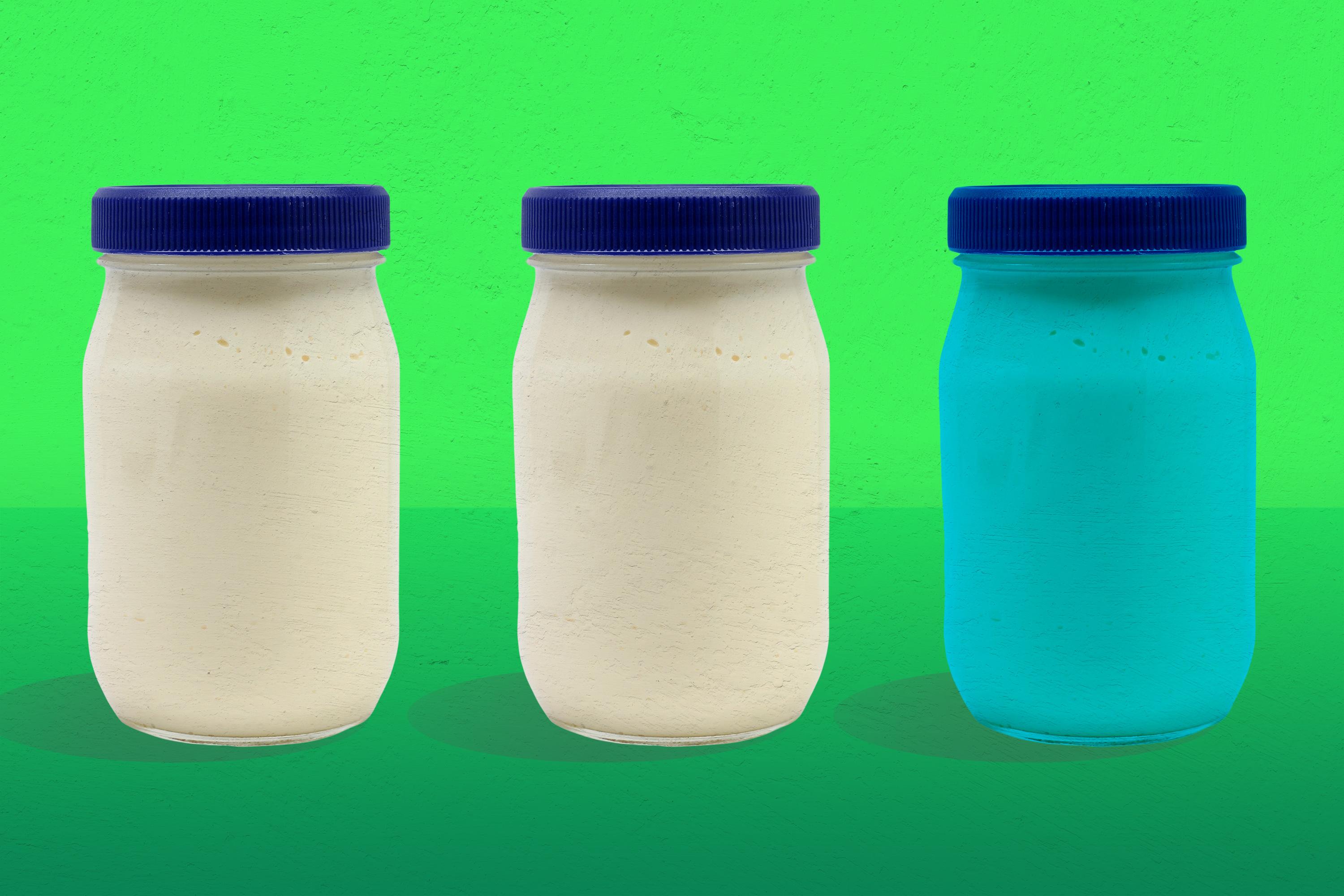The San Francisco–based accelerator IndieBio’s Demo Day is delightfully awkward. Scores of investors and journalists shuffle past nervous teams of founders into Herbst Theater, with its elegant chandeliers and grand old murals decorating the walls. Finally, with the room settled and the house lights turned down, the CEO of each of the 12 science-focused startups in the program steps to the stage, stumbles through a breathtakingly dense five-minute pitch of mind-bending products like 3-D-printed kidneys, lab-grown fish, and pheromone-based insecticide, and then asks for funding. The halting presentations are symptomatic of the program at IndieBio, which strives to turn scientists with big ideas into successful CEOs within four months. So this September, at IndieBio’s Demo Day (the three-year-old accelerator’s fifth fundraising event), it was staggering when Matías Muchnick, in a Tasmanian Devil–adorned Hawaiian shirt, gave a clear, concise, funny presentation about the way his company, NotCo, would change the food industry.

Most of the IndieBio companies are speculative (the 3-D-printed kidney could be available in seven to 10 years), but NotCo entered the accelerator with a product ready for market. Included in the pitch from Muchnick and his two cofounders—Karim Pichara and Pablo Zamora—was a sample of NotMayo, a vegan mayonnaise currently sold in 220 stores throughout Chile. For IndieBio cofounders Arvind Gupta and Ryan Bethencourt, taking on a company with a product already on shelves was a departure. But the mayo is just one small part of their vision for NotCo.
NotCo’s pitch is a grand one: to completely disrupt the factory-farm food system. The company argues that its proprietary machine-learning algorithm can efficiently sort through a complicated web of consumer food needs (nutrition and sustainability, but also mouthfeel, flavor, color, etc.), allowing NotCo to bring successful, delicious vegan alternatives to stores and upend animal-based markets in the process.
For the IndieBio team, the fact that the startup’s first product was already on the market proved that NotCo could deliver. But the machine-learning algorithm is what really has Gupta and Bethencourt excited.
“So then the key question is: Can the core technology become powerful enough to drive a billion-dollar company?" Gupta asks.
At the Milken Institute’s Global Conference in May 2016, executive chairman of Alphabet (Google’s parent company) Eric Schmidt dubbed the plant-based meat industry the no. 1 trend in tech. That seemed hard to believe when Mark Post unveiled his $325,000 lab-grown burger to fanfare and jeers in 2013, but today, lab-grown burger startup Impossible Foods sells its veggie burger that bleeds at Umami Burger for $16. The biggest players in the food tech scene have been funded by everyone from Schmidt to Bill Gates to Leonardo DiCaprio; the nutritional and environmental benefits of meat and dairy replacements make the disruptive companies especially attractive to investors. It also doesn’t hurt that the global meat market is wildly lucrative; the USDA predicts China alone will import 1 million tons of beef in 2018.
They named it Giuseppe after the Renaissance painter Giuseppe Arcimboldo, famous for his portraits of human faces constructed with fruits and vegetables.
Almost three years ago, Muchnick, who founded two other startups, decided he wanted in on the growing plant-based protein market. His idea was to use a machine-learning algorithm to replace animal proteins with vegan alternatives. Rather than focusing on simply mimicking the look and taste, Muchnick dreamed of meat, egg, and dairy replacements that molecularly matched the originals. He pictured a plant-based milk that could both foam and be cooked into a flan. But he needed someone to build his hypothetical algorithm.
“He heard about me from a friend of his, because this country’s not so big,” Pichara, who holds a doctorate in computer science and was a postdoctoral fellow in Machine Learning for Astronomy at Harvard, tells me.
When they began working together two and a half years ago, Pichara was teaching at a Chilean university while also developing machine-learning tools for the Millennium Institute of Astrophysics. Muchnick asked if he could write the animal-protein replacement algorithm, and Pichara loved the idea. It would be a nice change of pace from building algorithms to classify variable stars or detect quasars.
Muchnick brought Pichara a data set with chemical, molecular, and nutritional information of plant-based proteins and let the computer scientist get to work. Pichara, who admits he knew nothing about food at the time, sent the first output recipe—a plant-based mayonnaise—to Muchnick to try. That first attempt—a mix of various seeds and vegetable oil—was far from perfect, but close enough to know that they were onto something. So the two got to work training the algorithm. They named it Giuseppe after the Renaissance painter Giuseppe Arcimboldo, famous for his portraits of human faces constructed with fruits and vegetables.
It’s impossible to talk about vegan mayo without mentioning the market-leading but currently embattled Hampton Creek. In 2015, Business Insider ran an exposé about Hampton Creek in which former employees alleged that, among other indiscretions, the company fudged its ingredients list and outsourced the production of the first version of its flagship mayo. In The Atlantic’s November issue, a profile of the company’s cofounder that documents board shake-ups and questions of profitability, asks what the vegan-mayo company—valued at $1.1 billion last fall—is really selling.
Both Bethencourt and Gupta were quick to distinguish NotCo from Hampton Creek. Bethencourt, who considers Hampton Creek cofounder Josh Tetrick a friend, tiptoed around the issue before admitting that he was wary of Hampton Creek’s scientific credentials. “At IndieBio, our focus is really to embrace science, really deep science,” he says. “It can’t just be slightly differently spiced or just a little tweak on what's existing.”
Gupta was much less subtle in his appraisal of the two companies. “Matías actually did what Josh [Tetrick] was attempting,” he says. “They’ve created a machine-learning algorithm that can really take the molecular structure of all the different proteins in plant-based foods that exist today and then combine them in ways to create new flavors and tastes.”
In the Business Insider story, a former employee alleged that Hampton Creek’s database of plant samples was at least “5x less than it was claimed” to be. In NotCo’s case, almost all details about its plant-based protein database—which the algorithm searches through to find meat and dairy replacement ingredients—are kept obscured. Muchnick and Pichara both say there are many more than 1,000 plant-based proteins in their data set with which Giuseppe can build recipes for vegan alternatives. But neither would give an exact number or explain how they obtained the molecular makeup of the proteins. “I think that speaking about the number of instances of our database … and who compiled it and when is revealing too much private information,” Pichara says in an email. When I asked Muchnick for more details about the process of constructing the database, he responded, via email: “We’re not very comfortable answering your questions in such detail.”
Tetrick repeatedly tried to sell Hampton Creek as a technology company, and NotCo was quick to do the same. In Silicon Valley, there’s value in explaining your idea through its groundbreaking technology; no one wants to invest in a food company just selling vegan mayo. The reticence to discuss the plant-based protein database is frustrating, if unsurprising in the secretive world of startups. But the machine-learning algorithm—able to sort through numerous consumer and environmental preferences to deliver an output recipe—is the reason investors are excited about NotCo. That’s why NotCo isn’t pushing its vegan mayo; the real product is Giuseppe.
Machine learning in food is especially challenging because of the subjectivity of taste. While Google’s machine-learning AlphaGo mastered the ancient Chinese board game Go by playing countless games against itself to discover new strategies, Giuseppe needs human feedback in order to train. Each time the NotCo team inputs the food item they hope to replace, the algorithm delivers an output of 50 to 60 recipes. The team then tests each version of the recipe, giving the flavor, texture, color, and other properties numerical rankings, which are incorporated back into the algorithm. From Pichara’s initial mayonnaise attempt, it took six months of outputs for Giuseppe to learn what humans prefer on their sandwiches.
“I’ve tried some awful shit. Green mayonnaise. Red mayonnaise. Purple mayonnaise,” Muchnick says, laughing. “We made a mayonnaise that contained beets, and it actually tasted amazing, but you cannot sell something that is purple and say it’s mayo."

Once Giuseppe began to master texture, color, and flavor, Muchnick, Pichara, and Zamora—who now runs the scientific team at NotCo—pointed their machine-learning algorithm toward a product that was not mayo. When they first started experimenting, they asked Giuseppe to build a better, cheaper chocolate. The goal was to replicate the taste of a 25 percent cacao chocolate with only 15 percent of the expensive bean. After months of trying output recipes and then retraining the algorithm, they managed to create a chocolate that could fool human taste buds. Muchnick and his cofounders brought the product to Pennsylvania to pitch Hershey’s.
“They loved it, but not only the chocolate. They were really interested in the technology,” Muchnick says. “But they wanted us to work exclusively with them, and we were not into that. So that's when we said, ‘You know what? Let’s do it for ourselves.’” (A representative from Hershey’s confirmed there was a brief meeting but said the R&D team does not remember any conversations about exclusivity.)
Muchnick’s story speaks to a real advantage that NotCo offers: Its major disruption is the addition of AI to food research and development. R&D in food is incredibly expensive—Giuseppe, in concert with a small team of tasters and chefs, can expedite the process. During four months at IndieBio, the NotCo team created both a vegan Greek yogurt and a vegan chocolate soufflé that will be market-ready in the near future.
“We really view [NotCo] as a fast-prototyping platform for new foods,” Bethencourt says.
I’ve tried some awful shit. Green mayonnaise. Red mayonnaise. Purple mayonnaise.NotCo cofounder Matías Muchnick
NotCo sees itself as a part of the food-tech movement, alongside Impossible Foods, Clara Foods (lab-grown vegan egg whites), and Memphis Meats (lab-grown meat). But the underlying idea—using a machine-learning algorithm to more efficiently account for a wide array of consumer desires—can be used for many industries. When I spoke with Ron Shigeta, IndieBio’s chief science officer, he had just met with a skincare company that was interested in using Giuseppe for R&D.
“In many ways the R&D departments within food companies have already been using pretty sophisticated tools,” says Sarah Smith, research director at the Food Futures Lab at Institute for the Future, an organization focused on studying long-term, sustainable solutions for food supply and waste. “Not necessarily an AI food scientist, but there’s a lot that goes into formulating for precisely the right crispiness and the right salt and sugar levels.”
So for Smith, what’s really exciting is that NotCo is arriving at a time when consumers are actively asking for more sustainable, nutritious options, so long as they don’t have to break the bank—and at a moment when some large food conglomerates seem interested in using new technology and science to deliver options that are healthy and environmentally friendly (Cargill Inc. recently backed Memphis Meats, while Tyson Foods invested in Beyond Meat last year).
“These large food companies don’t want to make themselves extinct—they don’t want that Kodak moment,” she says. “Part of the hope of what this technology can do is figure out how to continue delivering on the same taste and quality and texture that people are used to, while also meeting these other demands."
But to Dana Perls, senior food and technology campaigner for environmental group Friends of the Earth, the choice between factory-farmed and food-tech is itself a false dichotomy. She believes the path to fixing the food system is organic, sustainable, and locally grown. “These tech food startups are being super sensationalized and advertised as silver bullets to address every major food-system challenge, from hunger to pollution,” she says.
Perls is most concerned about what she dubs “the next generation of GMOs”—Impossible Foods, Clara Foods, and the other lab-grown protein companies. But she also worries about the application of Giuseppe in food R&D. “I’m wary of whose hands it’s in,” she says. “Is it profit-driven or is it driven by an actual need for real health and for protecting the planet? History shows us how technology is used for Big Ag profit, and that people and the planet come last.”
For Muchnick, mayonnaise made sense as the first product because, in Chile, mayo is a big deal. And just months after hitting the shelves in 220 Chilean stores, NotMayo has apparently become the third highest-selling mayonnaise where it’s stocked (behind only Kraft and Hellmann’s). Even Muchnick is surprised at how quickly it caught on, but theorizes it’s because people want a healthier option and “the alternatives that are out there suck.”
NotMayo’s success meant that NotCo was quick to turn a profit, according to Pichara. He explained that unlike in Silicon Valley, Chilean startups die if they don’t instantly produce some sort of income. In the food-disruption industry in particular, having a successful product to market at this early a stage is rare.
For Memphis Meats and the other lab-grown food startups, the coming challenge is twofold: First they must build a product that is safe and approved by regulators, and then they must convince the public that it’s harmless and delicious (Memphis Meats hopes to be in supermarkets by 2021).
Smith points out that though Clara Foods uses a process similar to cheese-making or fermentation when creating its egg whites, consumers still hear “lab-grown” and think “unsafe.” “The reason there is so much fear around the science behind the synthetic biology work is that it has been so opaque to people,” Smith says.
But part of the issue is that the tech industry’s “Move Fast and Break Things” mentality feels more precarious in the world of food—to Perls’s mind, moving slowly and methodically, with plenty of regulation, would be much more ideal. “Unfortunately, the food tech industry is racing forward, fueled by venture capital, a lot of hype, and without much regard for any consequences,” she says.
This August, The New York Times received documents that a social and ecological organization and environmental watchdog obtained from the FDA that showed the regulators still have questions about the safety of soy leghemoglobin, which gives Impossible Foods’ burgers their distinctive meaty taste. The agency expressed concern that the substance—found naturally in soybean roots and grown from genetically engineered yeast in Impossible’s labs—may be an allergen. But because the FDA did not rule the ingredient unsafe, Impossible Burgers can continue to be served. For Perls and many others, the idea of eating lab-grown meat without fully understanding its health impacts is frightening.
These tech food startups are being super sensationalized and advertised as silver bullets to address every major food-system challenge, from hunger to pollution.Friends of the Earth senior food and technology campaigner Dana Perls
For NotCo, the challenge will be less with regulators (“This is similar to Tofurkey—using whole ingredients in novel recipes,” says Shigeta, IndieBio’s chief science officer) than with a crowded North American marketplace. According to 2016 research from the investment firm Wedbush Securities, the plant-based food industry made more than $3.5 billion in sales, which is exciting to Bethencourt. But he also admits that the United States market, not short on plant-based alternatives, will be the harder to break into than the relatively open Chilean one. “There's enough momentum with the acquisition of Silk and other companies that it’s clear this plant-based world is real, with real dollars behind the growth,” Bethencourt says. “The biggest challenge for NotCo in the United States will be shelf space.”
If NotMayo struggles to disrupt the United States mayo market when it arrives in 2018, Bethencourt still believes NotCo will be able to flourish in emerging economies and as a tool for R&D. After leveraging its time at IndieBio into a seed round of $5 million, NotCo’s founders have returned to Santiago, Chile, with Silicon Valley funding. The question, as IndieBio founder Gupta posed it, is can Giuseppe power a billion-dollar company?
Pichara envisions NotCo making part of its profit by selling the algorithm’s insights to other food companies looking to replace animal proteins; Giuseppe could offer other food companies a path to animal-protein replacement without a gigantic investment in R&D.
But for Muchnick, the vision is much larger. He sees his company—along with Impossible Foods, Clara Foods, and many future plant-based protein startups—radically altering the food industry. He believes science-focused food startups will disrupt the environmentally and morally taxing factory-farm industry by creating alternatives that taste as good as or better than meat and dairy options. And of course, he believes NotCo will be a central force in that remade industry.
“Our focus is to be the Nestlé of millennials,” he says. “We really want to fill your fridge with NotCo products.”
Vegan mayo, vegan yogurt, vegan soufflé, and then, if Muchnick is right, the whole damn world.
